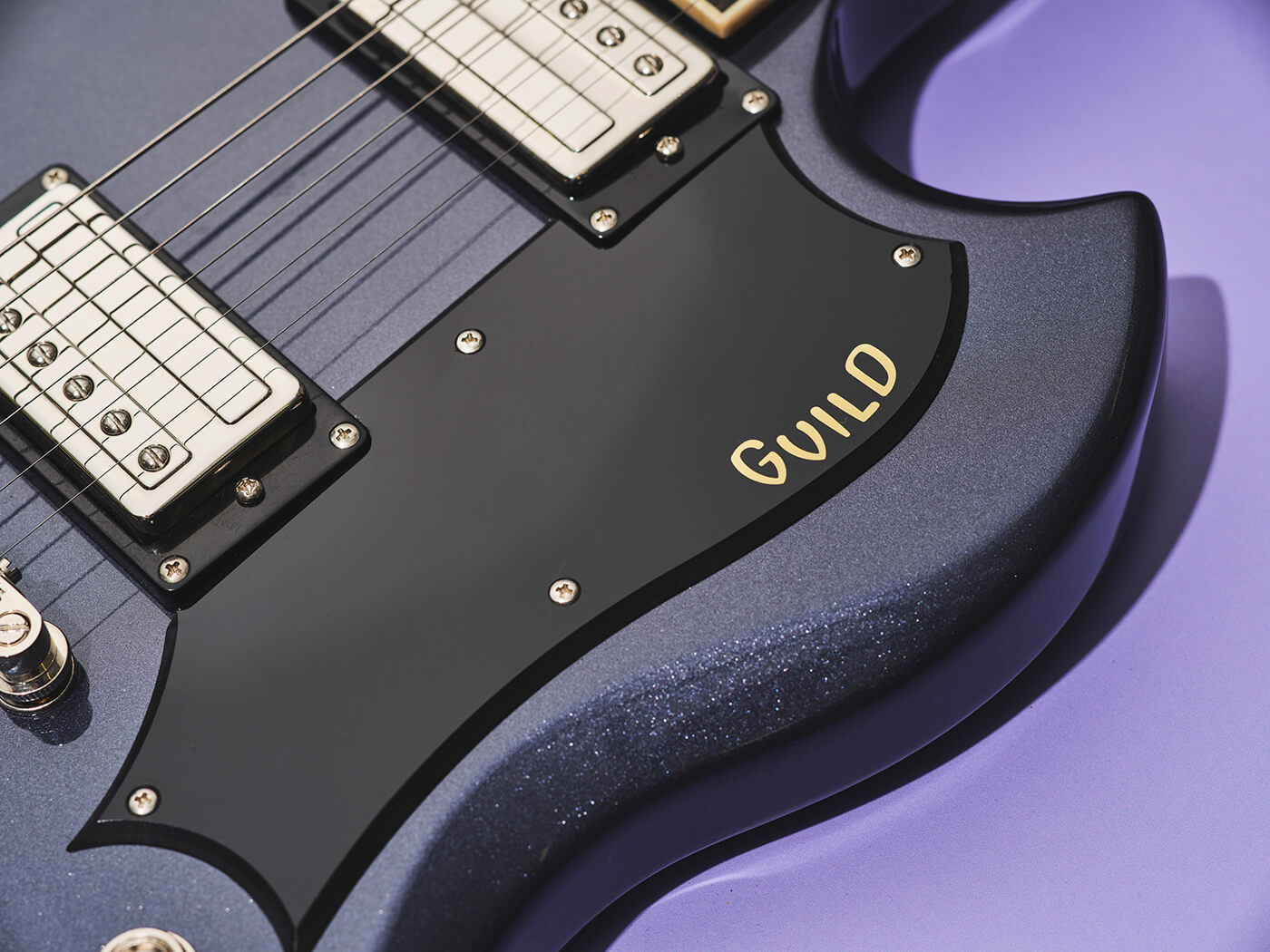Guild Polara Deluxe review: Guild’s new non-signature double-cut delivers the goods
The S-100 Polara is back for 2024 – and the most traditional model in the new lineup sticks the landing, mainly by not being that traditional-sounding.
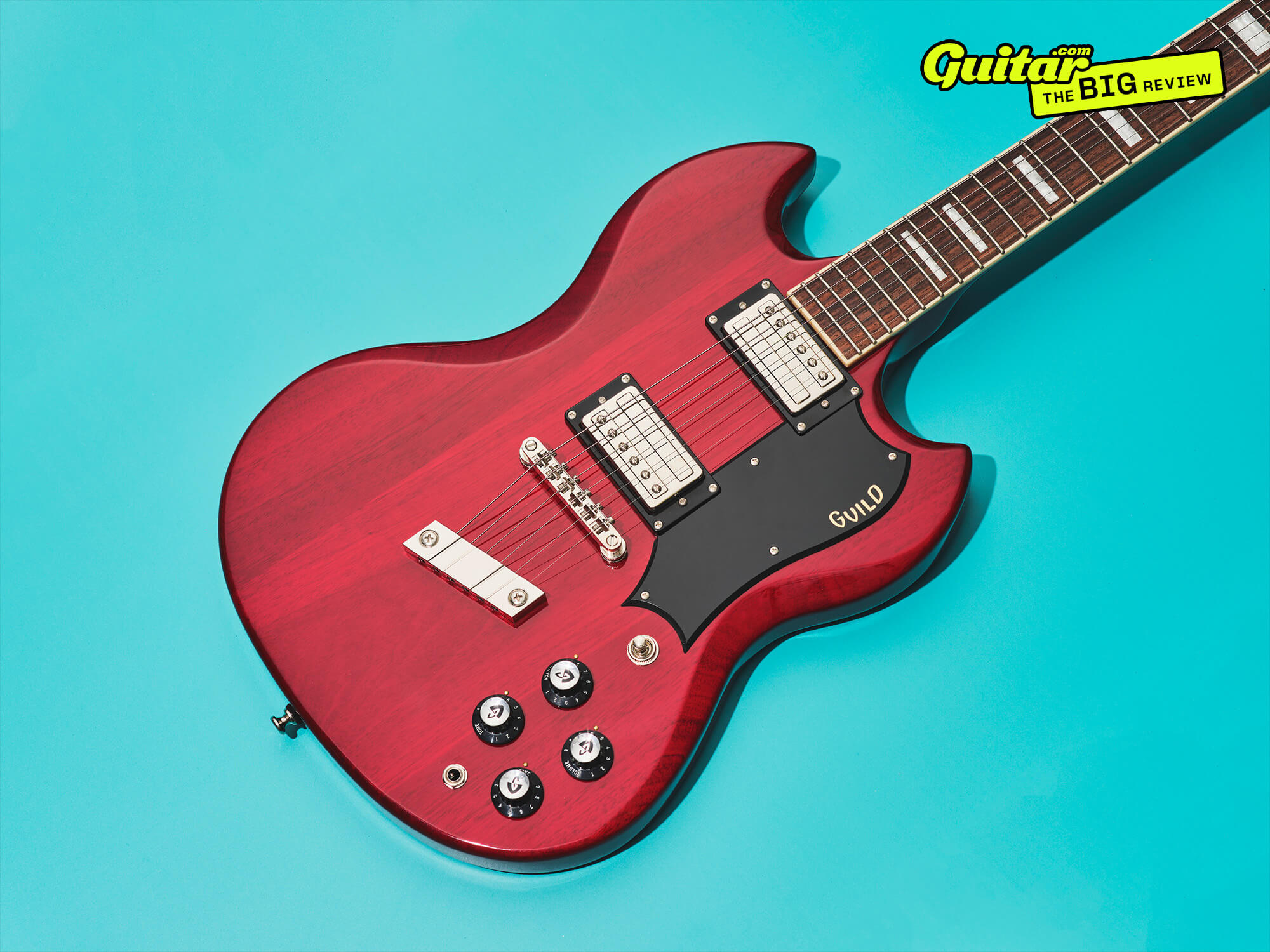
Guild Polara Deluxe in cherry red. Image: Adam Gasson
Review Overview
Our rating
8
Our verdict
$699, guildguitars.com
Hey, remember the Kim Thayil S-100 Polara from last year? That was a pretty damn cool guitar. But what if you want a relatively affordable Polara model with similar specs but no scribble on the control cavity cover? Well, good news: Guild’s big launch this NAMM is a refresh and rebrand of the S-100 into the new Polara line. The Polara Deluxe is on the review bench today, but there’s also the more affordable Polara base model, as well as the one-pickup Polara Night edition (both $549).
But the Deluxe is the one that most resembles the S-100 Polaras of yore, especially if you opt for the tobacco sunburst or cherry red finish. Visually, it is undoubtedly SG-inspired – but it’s not like the original it draws from was some lawsuit-era clone. The distinctive headstock, slightly offset body, angled bridge and rather chunky horns do more than enough to set it apart from any Gibson design.
Hardware and electronics differ slightly from the Kim Thayil S-100’s, even if the underlying wood is almost certainly carved to the same CNC template. The pickups themselves are Guild’s all-new HB-2+ humbuckers rather than the HB-1s, and there’s no phase switch here – instead the neck and bridge humbuckers are coil-splittable with push-pull pots.
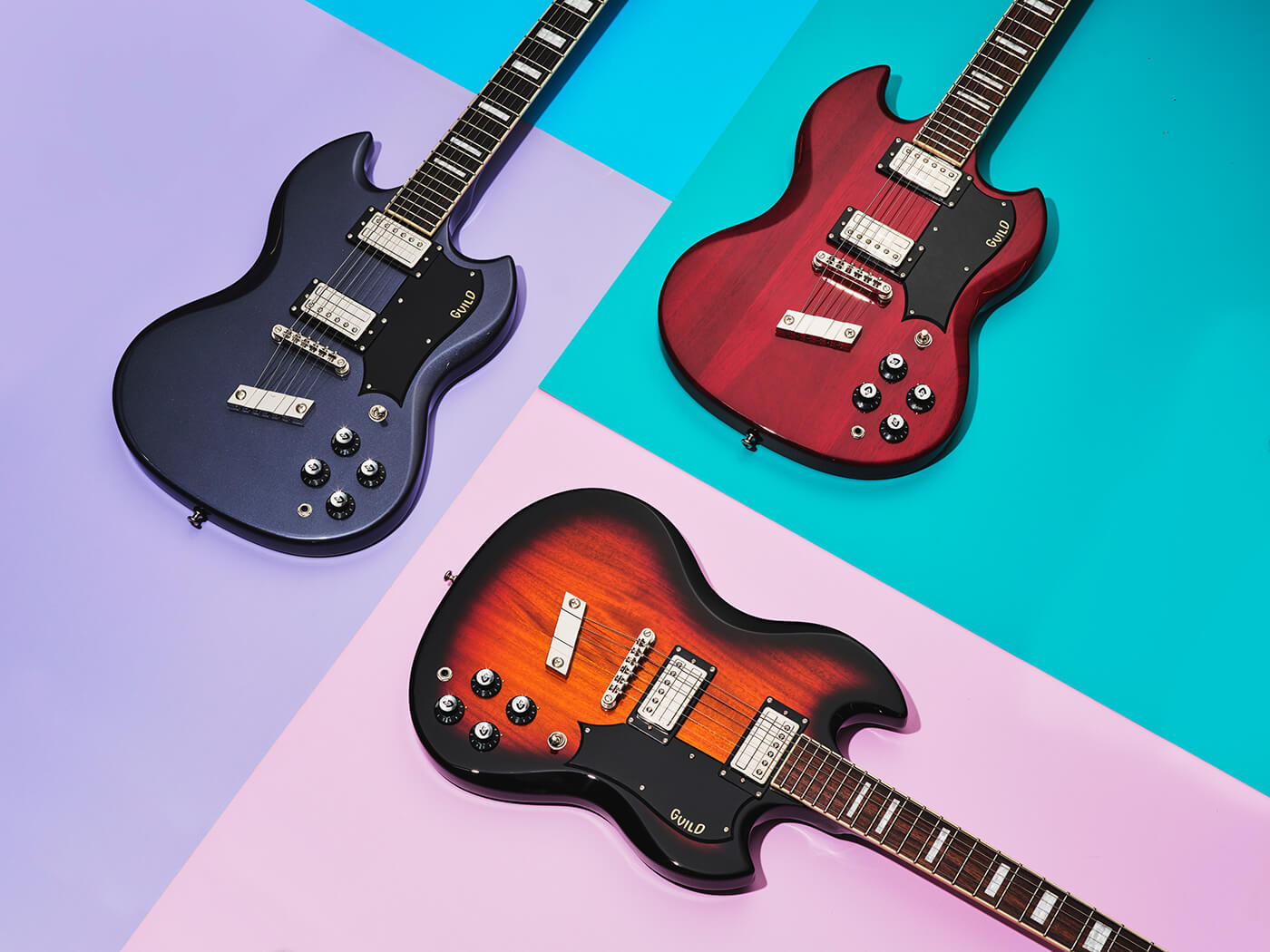
How does the Polara Deluxe sound?
Putting on the Polara Deluxe, and perhaps the first thing to note is the complete lack of neck dive. The thick body really does balance well, without being as heavy as, say, a fully-fledged Les Paul. Even compared to the Kim Thayil model there’s less shoulder-pull from the strap – the tuners are light open-gear models, meaning the centre of gravity is firmly in the body.
The neck itself is comfortable, too – thick enough to fill the hand, slim enough to stay out of the way when you need it to. The neck joint is fairly substantial, yes, but not so much that super-high shredding isn’t an option, and the generous cutaways do allow flexibility in how you approach the dusty end.
Plugging in, it’s time to put those new HB-2+ humbuckers to the test. These are, in my opinion, the highlight of the guitar. Rather than giving them an old-school vintage-voice, Guild has embodied the Polara’s slightly angular nature in the HB-2+s with a lot of output and a sharp upper-midrange bite.
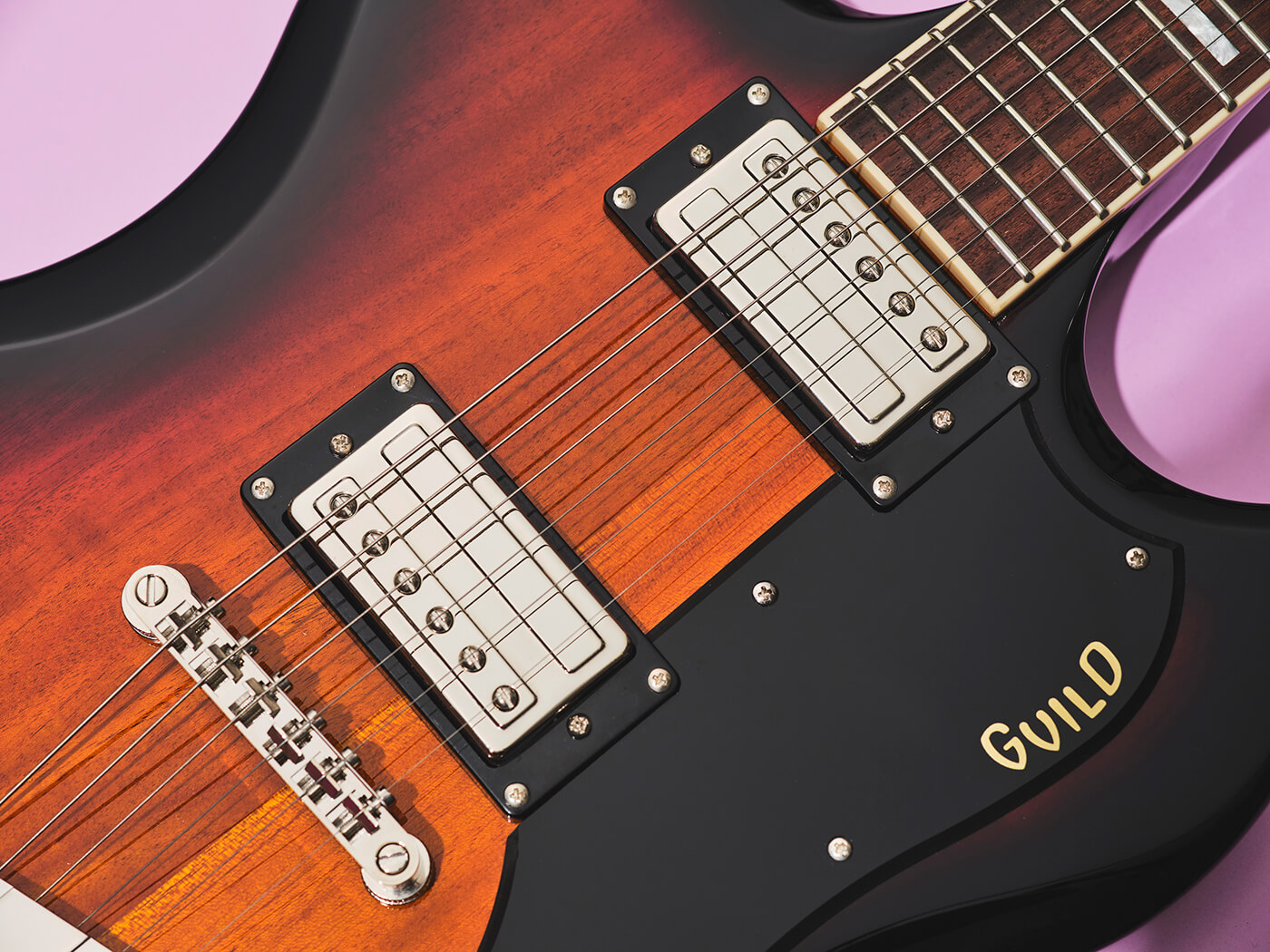
Depending on what kind of amp you’re using, the clean tones might be a little too pokey – the high output means your amp will start compressing sooner than it would with a more restrained set. But hey, this guitar has two pointy horns. Are we really here for cleans? The main question is: does it do its rock roots justice?
Unsurprisingly, yes, it does. The HB-2+ humbuckers do a great job of providing enough volume for distorted tones to chew on, and the focus on upper midrange means that a light sprinkling of amp grit, smatterings of distortion and blasts of fuzz all stay clear and don’t get muddy or boomy.
The split sounds are, on the other hand, a surprise, in that they’re pretty usable. Split humbuckers don’t always inherently work: you’re effectively using half a pickup, so underpowered and thin sounds are always a risk. But here they remain fairly punchy, presumably because they’re coming from a fairly hot starting point. The bridge pickup is still capable of whacking the front of an overdriven amp with Sabbathy fervour, and the neck pickup becomes bright and articulate – certainly a better option for cleans than the full humbucker sounds.
So, yes, you can use it to smash out some AC/DC chords, but the pickups’ clear voicings in both modes mean that those of you out there with gargantuan pedalboards have a pretty great starting point for sonic exploration.
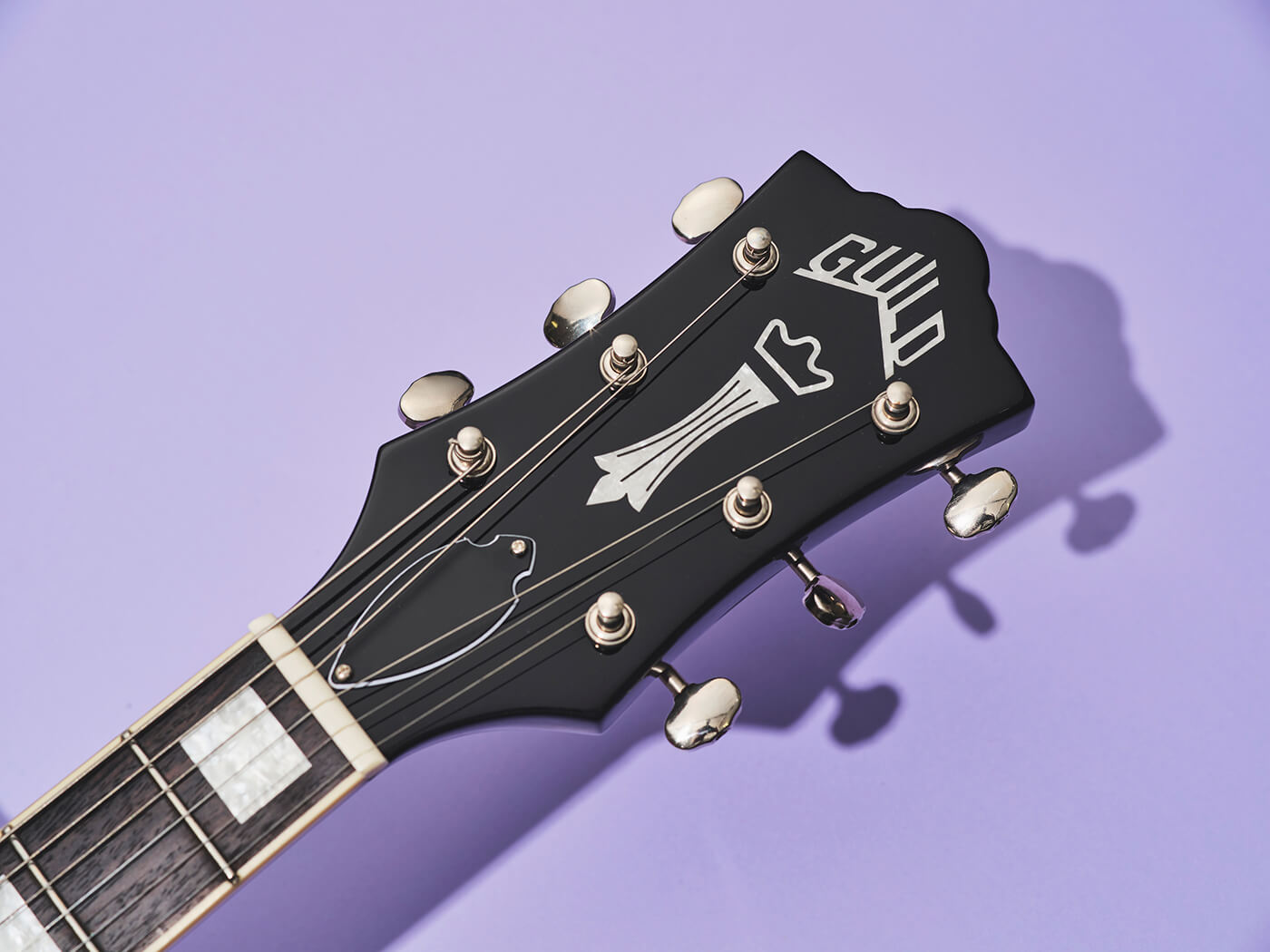
Is the Polara Deluxe well-made?
The hardware, fit and finish is broadly good. Frets are neat and level, action is lovely and low, and that decked-to-the-body Guild Tailpiece combines with a generous neck angle for a good amount of downward tension on the bridge. Guild’s claims of a lively, resonant feel and strong sustain hold absolutely true.
The tuners are sturdier than their open-gear appearance might make you think. But, that gets me to my biggest bug-bear: out of the box, the tuning stability is far from fantastic. Upon restringing, the culprit is immediately identified: the nut slots are holding onto the strings for dear life. Never a good thing, especially not on a three-a-side headstock. It’s not the end of the world, as filing each slot to be a little wider with the old string and adding a dab of chapstick makes things much more stable. But, it’s still not ideal: a well-cut nut can take a guitar from good to great, and so much of the Polara Deluxe almost transcends its price point. Things like this bring it back down to earth.
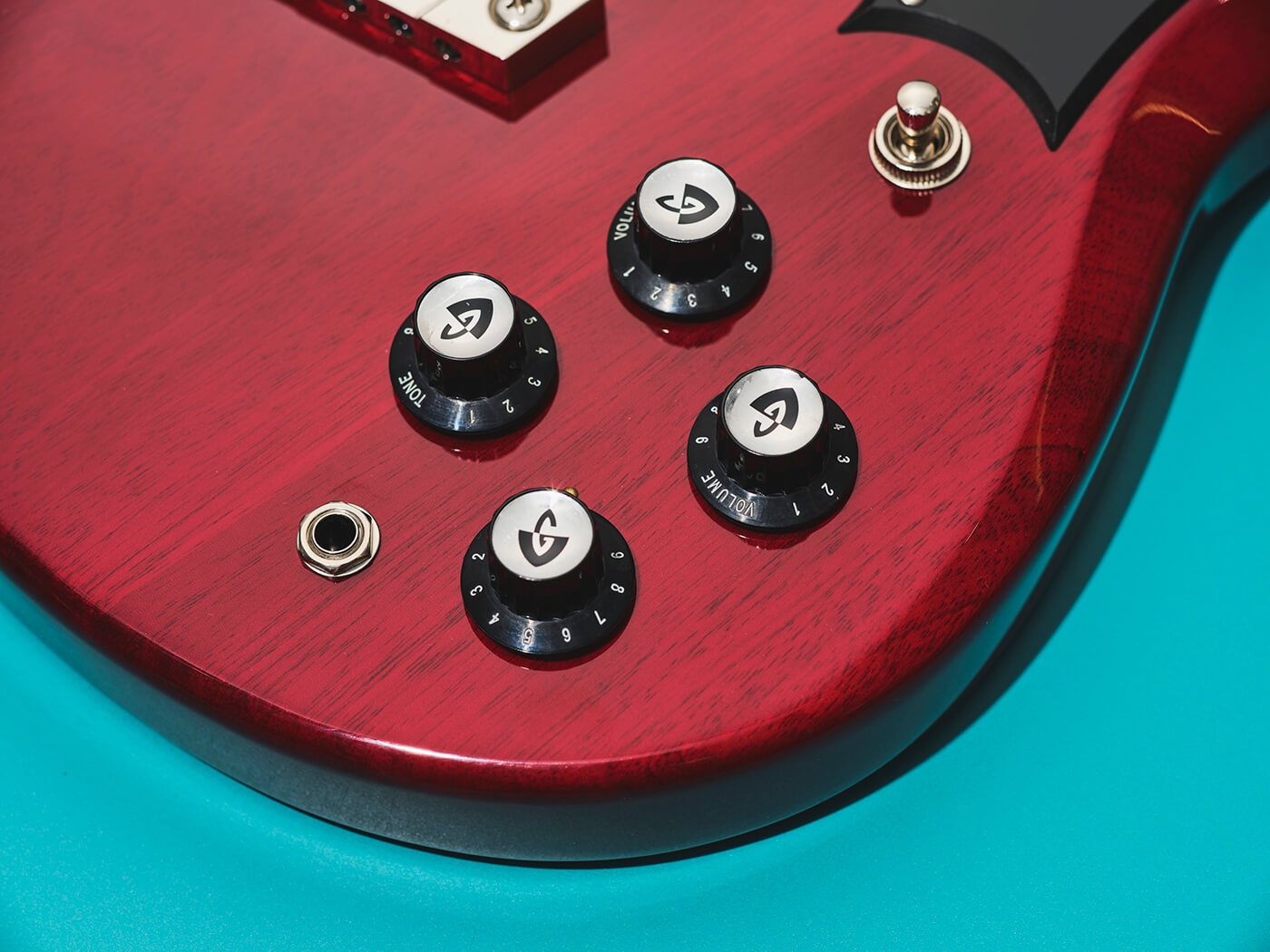
Is the Polara Deluxe good value for money?
The pleasant sonic surprises from the pickups, and the really comfortable playing experience, both make this a pretty appealing prospect beyond just an SG alternative. Even compared to the Kim Thayil model, it’s a good bit cheaper, and many more players will find its split-coil sounds a more usable trick than the signature model’s out-of-phase sounds.
The Polara Deluxe retails for $699 street. That’s certainly cheaper than you can pay for a new SG that says ‘Gibson’ on the headstock, and it’s also not a huge amount pricier than some that say ‘Epiphone’ either. While it’s not a revolutionary guitar for the money – its quality is firmly within what to expect for an upper-mid-priced import model – it makes up for that with a lot of personality.
